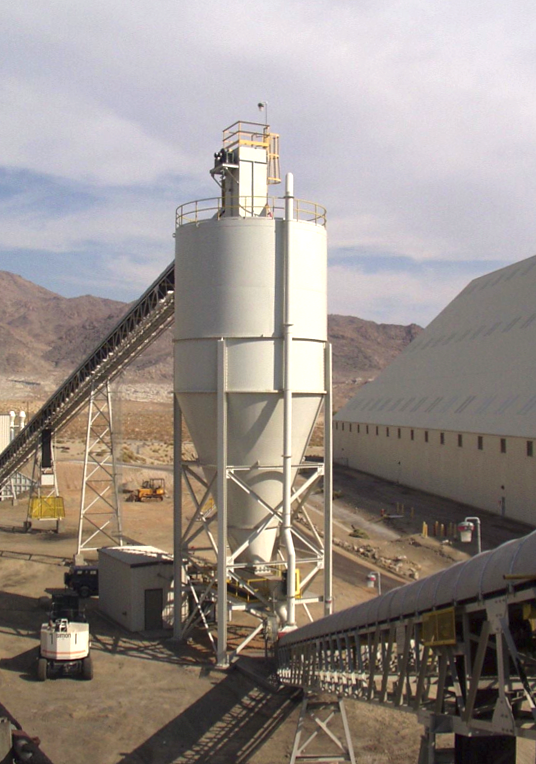
The Structural Group at Jenike & Johanson will start a series of blogs where not only we will be discussing about components in bulk solids storage structures such as bins, silos, bunkers, vessels, etc. but also about basic structural engineering concepts that relate with these components. It is important to note that rehabilitation of existing storage structures or new designs are challenging tasks that requires not only the understanding of the structural analysis and design of these types of structures, but also knowledge of bulk solids flow behavior as well as their loading pattern. Therefore, we will discuss how these components behave and work under loads imposed by bulk solids.

For example, two common components in bulk solids storage structures are circular cylinders and conical hoppers. The purpose of the cylinder and cone walls is, of course, to contain the bulk material. The bulk material, in turn, exerts [popover image=”/13815-2/silo-pressures-2/” link_text=”pressure normal” title=” ” content=”Normal Pressure Curve” direction=”right”] (i.e. perpendicular) to the cylinder and cone walls and also shear tractions down the walls. The normal pressures are resisted by hoop stresses in the cylinder and cone, while the shear tractions impose drag-down forces in the cylinder and cone walls. Depending on the support location for these two components, the shear traction may impose compressive or tensile stresses in these components.
If we consider a common arrangement where the cylinder is supported along its entire perimeter at the base (e.g. skirt supported) and where the conical hopper is attached to the cylinder at certain elevation along the cylinder height, the cylinder will be under compressive stress while the hopper will be under tensile stress. Under these considerations, the ability of the vertical cylinder to resist hoop tension depends on the tensile strength and thickness of the cylinder wall, while its ability to resist vertical compressive stresses depends on the stability of the walls (i.e., the ability to resist [popover image=”/bluesilocollapsing-1-3/” link_text=”buckling” title=” ” content=”Silo Failure” direction=”right”]). Typically, for metal cylinders the buckling strength is more critical than the ability to resist hoop tension. The hopper is only subjected to hoop tension in this particular case and, similar to the cylinder, its ability to resist the exerted stresses depends on the tensile strength and thickness of the cone wall.

I can certainly keep writing about these fascinating structures but I have to leave some material for the future blogs! I hope these blogs will not only be interesting and informative but also help to create awareness on the complexity involved in the design of bulk solids storage structures, so stay tuned.




